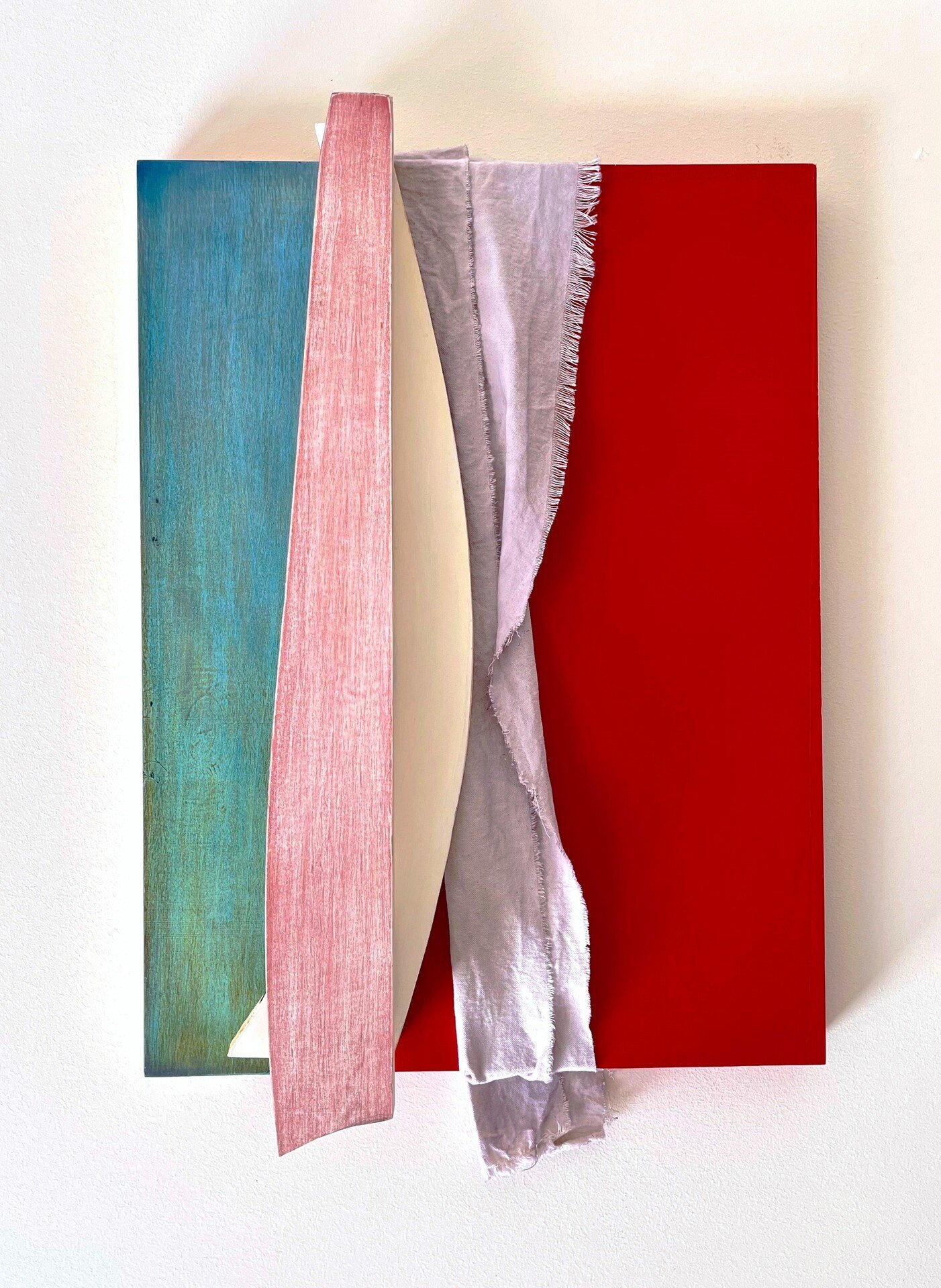Explorations of Color
Juried by Anna Mikaela Ekstrand
Exhibition Text
To the eye, colors are our visual perception of light. However, in our minds, their associations are boundless—representing memories, emotions, people, places, situations, or objects. Robert Motherwell wrote: “The ‘pure’ red of which certain abstractionists speak does not exist. Any red is rooted in blood, glass, wine, hunters’ caps and a thousand other concrete phenomena. Otherwise, we would have no feeling toward red and its relations.” Explorations of Color begs its viewers to approach color from this associative and sensory angle: What do blood and wine feel like between the fingers, and what places do they remind you of? The 31 artists in the exhibition work across assemblage, collage, fiber, jewelry, painting, performance, photography, and video to bring their interpretations of the world to their viewers—the works take on this understanding of color, enhancing it to bring you new associations and to weird places. As a curator, I ask you to dive into the work, imagine touching it, and observe your reaction.
Surrealism figures heavily in the works on view—simply overrepresenting a color in an artwork creates an unusual and sometimes otherworldly mood. Emulating the eponymous painting style, nature morte, or still life, depicting ‘dead nature’ fruits, flowers, and objects, Liz Obert’s contemporary renditions are both eerie and humorous. Obert leans into monochrome and consumerism while maintaining a Dutch 17th-century sensibility in her still-life photography, Modern Vanitas, which incorporates cleaning products. Other artists like Jenna Lynch’s intense green in Abisko Aurora and Keren Anavy’s Blood will turn into water use of many shades of red enhances natural to the supernatural. Emily Denton’s photograph of a fish, 12:53 pm, Seaview, and Caitlin Winner’s Favorite Son, a photorealist painting, veer into a hyperrealist direction and leave the viewer with an out-of-place feeling as they take in the ungraspable moment that has long since passed. The interplay of color and its subtility is represented by abstract painters Mary Constantine and Judy Levit—both work to evoke emotional blasts of abstraction and color. Concepts in the show overlap and blend, akin to a painter’s mixing palette.
Although not all artists are placed within groups, to keep the format freer, some are: The Monochrome as Surreal, If You Were to Close Your Eyes, and New Ideas bring artists together. The first investigates monochrome, as discussed earlier. The second presents artists who play with light and another, Bruna D’Alessandro, a metal worker who has worked with the surface of her work—using multiple hammering and heating techniques—to create irregularities in texture and tonality, while Erin Duba and Gabrielle Dobrzelewski present two very different light sources: What type do you imagine when you close your eyes? Excerpts from a poem by William Sharp about light and darkness and lyrics by Joni Mitchell, about a conversation with a blind girl about color, serve as prologs to these themes. Words by Sylvia Plath opens the last grouping, New Ideas, which combines David Morrison’s sci-fi-esque mise-en-scene with Diana Meridi’s video work of the moon and Robly Glover’s necklace—all expand the concept of color completely.
At the Bauhaus, color theory alongside material properties and composition was part of the preliminary course—instead of copying from past precedents, students were encouraged to create new work, relying on their intuition. This intuitive and open-ended ethos is what I had in mind for Explorations of Colors.
Departing from the sensation of color, three pieces by Dwora Fried centering the psychologies of memory close out Explorations of Color. Her assemblages of 1950s vintage furniture, dolls, and objects merit their own room in which they can be closely looked at—apart from the sharp and dull sensations of color. Fried, who is now based in Los Angeles, grew up in Vienna as the Jewish daughter of Holocaust survivors. “I inherited a sense of isolation, displacement, and an appreciation for the surreal,” she explains. Grappling with what to hide and what to share was not only handed down to her from her parents, as her works also investigate her plight as a queer woman. Like dreams, the collection of three works made between 2021 and 2022 offers subtle hints at her lived and inherited history. In the vein of Laurie Simmons, Fried’s works created within a feminist zeitgeist present a complex snapshot of her psychological landscape and should serve as a leading example of its kind in art history. – Co-Written by Anna Mikaela Ekstrand & Jenny Wang














































